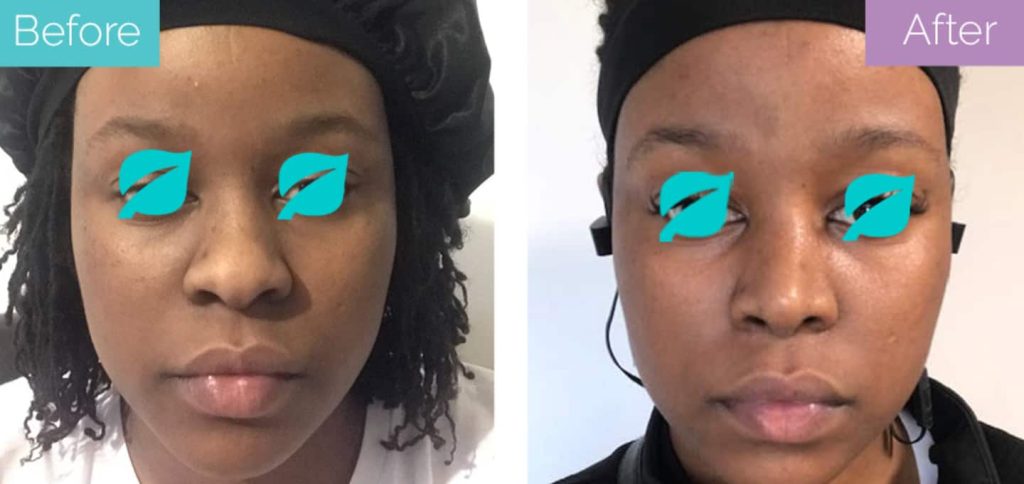Everyone’s nose serves the same purpose: it filters, warms, moistens, and smells the air. Plus, it affects the vocal timbre.
Although the function is the same, there are huge variations when it comes to aesthetics. And one important factor in this is ethnicity.
You don’t just inherit your nose from your parents, but also from their parents and then from their parents…from their parents… You get the idea.
And having an understanding of ethnic nose shapes is important if you’re considering rhinoplasty since it can help you achieve satisfactory results.
What Is An Ethnic Nose Shape?
Generally speaking, an ethnic nose refers to a nose which has certain physical traits that are characteristic of a particular ethnic group.
For instance, Caucasian noses are typically thin, tall, and narrow. Of course, that doesn’t mean that every Caucasian’s nose looks the same. But these features are commonly seen among them.
In general, ethnic noses are classified into three main groups:
- Platyrrhine – Characterised by being short, wide and downward facing with decreased projection. Commonly seen in Africans and Southeast Asians.
- Mesorrhine – Moderately sized with an acute nasolabial angle (between the columella and upper lip) and a high bridge. Commonly seen in Asians and Latinos.
- Leptorrhine – Characterised by being long and narrow with a well-defined and projected tip. Commonly seen in Caucasians.
One research suggests that climate plays a role in these ethnic differences in nose shapes.
Published in PLOS Genetics, researchers found that the nostrils are wider in warm, wet climates and narrower in cold, dry climates.
And it’s because narrower noses do a better job of trapping and warming air when inhaled. Additionally, natural and sexual selection reinforced certain types of noses in certain ethnic groups.
What Are The Regions With Different Ethnic Nose Shapes?
Here are a few ethnic groups and their common nose shapes.
East Asian
In most cases, East Asian noses are classified as mesorrhine – it’s a mix of leptorrhine and platyrrhine nose.
In general, they have the following characteristics:
- Slightly flared nostrils
- Low radix (depression at nose’s root)
- Slightly wide nasal base
- Under-projected, wide and flat nasal tip
- Flat nasal dorsum (or bridge)

According to a study published in Plastic and Reconstructive Surgery, Asian noses also tend to have “thicker and less pliable skin” with small and weak cartilages.
The underlying build of the nose is such that it appears short, flat and wide.
South Asian
South Asian noses are also likely to be mesorrhine. However, it can vary depending on the region.

For instance, one research published in the Journal of Plastic, Reconstructive & Aesthetic Surgery showed that within India, North Indians tend to have more Caucasian noses, South Indians have very broad noses, while those from the Himalayan region have the shortest nose.
Similarly, an analysis of the nose shapes of Nepalese students – published in the Journal of Nepal Health Research Council – found the mesorrhine nose to be the most common.
Most participants had rectangular-shaped nostrils and triangular-shaped philtrum (a vertical groove between the base of the nose and the upper lip).
African
The African nose is most often considered to be platyrrhine – broad and flat.

A few features of the African nose described in a study published in the Annals of Plastic Surgery include:
- Concave bridge
- Bulbous tip
- Flared nostril wings
- Short columella
The tip is also likely to be less defined, with the nose being under-projected. And the African nose also has thick skin draped over it.
European
The European nose is likely to be classified as leptorrhine.
Based on a study published in Aesthetic Surgery Journal Open Forum, this nose shape can have the following characteristics:
- Long nasal bones
- Bony hump
- Narrow dorsal aesthetic lines (lines extending from the corner of the eyebrows to the nose tip)

Additionally, this ethnic nose shape also has weak cartilage but with thin skin draped on top.
Mediterranean
A hooked nose (also known as an aquiline or Roman nose) is thought to be quite common in the Mediterranean race. For instance, the typical Italian nose is considered to be big and hooked.
In general, however, the characteristics of a Mediterranean nose have been described by Armando Boccieri in his research titled: “The Surgical Approach to the Mediterranean Nose.”
Based on that, a Mediterranean nose tends to have a:
- Convex profile
- Thick upper third
- Prominent bridge and hump
- Droopy tip
- Downturned nose
- Thick skin

However, within that region, differences have also been observed in another study published in the Journal of Craniofacial Surgery.
For instance, it reports that an Egyptian nose tends to be round and flared with a wide bridge and small hump. The Levantine nose (Lebanon, Syria, and Jordan) has a more “eagle profile.”
And Turkish noses are of two types: Anatolian and Oriental – the former characterised by a broad tip while the latter by a “tent-like” shape.
Hispanic Latino
A Hispanic Latino nose is also referred to as a mixed race or mestizo nose.

Different researchers have identified the main characteristics of this ethnic nose shape, which include:
- Thick skin
- Undefined, bulbous tip
- Downturned nose
- Wide base and bridge
- Slightly flared nostril wings
According to research published in the Facial Plastic Surgery Clinics of North America, these noses also tend to have a poor “osteocartilaginous” structure. The cartilage of this nose is also weak.
Does The Shape Of Your Nose Depend On Race?
Different ethnic groups tend to have different nose shapes. Therefore, your racial or ethnic identity can influence the shape of your nose.
However, as mentioned above, it’s been theorised that the shape of the nose is actually sculpted by climate, in addition to genetics. There can also be gender-based variations in different ethnic nose shapes.
Why Does Your Ethnic Nose Shape Matter For Rhinoplasty?
If the distinct ethnic features of the nose are completely eliminated in a surgical rhinoplasty, it will give you less than satisfactory results. That’s because your nose might not harmonize with your facial features.
Not so long ago, the Caucasian nose was considered the standard when it came to aesthetic rhinoplasty.
But because ethnic noses have different characteristics and, in turn, different concerns, a one-size-fits-all approach is not likely to work. A poorly done ethnic nose job can even cause breathing problems.
Therefore, your surgeon needs to take your ethnic traits into account to determine whether you need tip projection rhinoplasty or hump reduction rhinoplasty or something else.

Longevita Has Experienced Ethnic Rhinoplasty Surgeons In Turkey
Longevita’s plastic surgeons in Turkey have performed many ethnic nose jobs over the years. They’re particularly experienced in them because of the sheer diversity in the medical tourism industry.
They’ll prepare a customised treatment plan for you after taking your unique nasal anatomy and ethnic background into consideration. That way, they’ll ensure that the original character of your nose is preserved.
Additionally, an ethnic rhinoplasty in Turkey will also cost you around 3-5 times less than in the UK.
We have treated patients from a wide range of ethnic backgrounds, so you can request before and after images to see how your results may look. If you have any other queries, don’t hesitate to get in touch with us.
FAQ
u003cstrongu003eIs ethnic rhinoplasty different from traditional rhinoplasty?u003c/strongu003e
In both ethnic and traditional rhinoplasties, the goal is to change the nose’s shape. However, in the former, the surgeon also makes to preserve the unique ethnic characteristics of the nose. u003cbru003e
u003cstrongu003eCan you make your nose bigger?u003c/strongu003e
You can increase the height, width and overall size of your nose with a surgical rhinoplasty. In some cases, implants might also be used.




